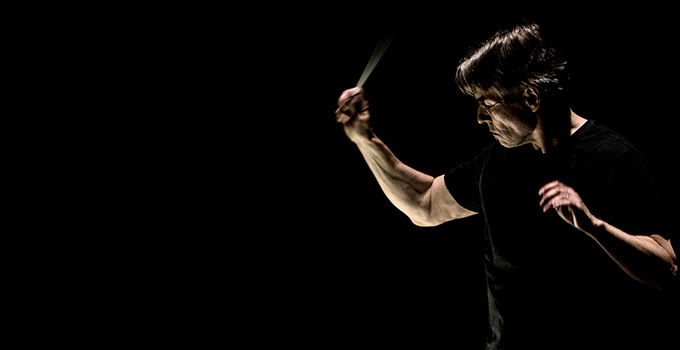Sometimes, it is obvious that a person excels at their craft, even when you don’t have expertise in that area, and that is how I felt watching Esa-Pekka Salonen conduct the London-based Philharmonia Orchestra last Wednesday.
The first piece on the program was Arnold Schoenberg’s Verlärte Nacht, Op. 4. The title, which means “Transfigured Night,” comes from a poem by German Poet Richard Dehmel, and the piece is based on this poem. The poem’s main event, according to the program, is “a woman’s admission to her lover that she is bearing another man’s child,” but it also notes that “it may be advisable that we…hear it as an independent work of art, without referring to the program.” Frankly, I must agree with this. The piece is much more enjoyable without the bizarre plot of Dehmel’s poem crowding the mind, even though “the piece would not have ben written in the first place had it not been for [the poem].” Regardless, it is a lengthy piece in one movement, and the prevalence of dissonance does not allow for a grounded feeling to the listener. Face-value, it sounded other-worldly, but it is also an almost exhaustingly continuous piece.
After an intermission, the second piece on the program was Anton Bruckner’s Symphony No. 7 in E Major. In some ways, the Philharmonia Orchestra’s sound during this piece reminded me of the Philadelphia Orchestra’s sound from their Hill Auditorium performance last fall. Both orchestras had “bass-heavy” sound structure, in that the cello and bass sections brought out the lower voices of the piece. Additionally, there was some very impressive horn playing in the latter movements of the symphony. My favorite movement of the piece was the second, the Adagio. Besides being a pleasure to listen to, the historical context of this movement is rather fascinating. According to the program, the movement’s theme came to Bruckner when he was feeling very sad because “the thought had crossed [his] mind that before long the Master [Wagner] would die.” Bruckner was deeply moved by the music of Wagner, and it was while he was in the middle of composing the second movement that he learned of Wagner’s death. In fact, he had just reached the point in the composition where there is a jarring cymbal crash – the only one in the entire symphony. Equally intriguing is the fact that this cymbal crash occurs precisely in the middle of the one-hour symphony.
I don’t believe that either of the pieces on the program will be added as new favorites of mine, but nevertheless, I certainly enjoyed the opportunity to hear Esa-Pekka Salonen and the Philharmonia Orchestra’s Wednesday night performance in Hill Auditorium.


